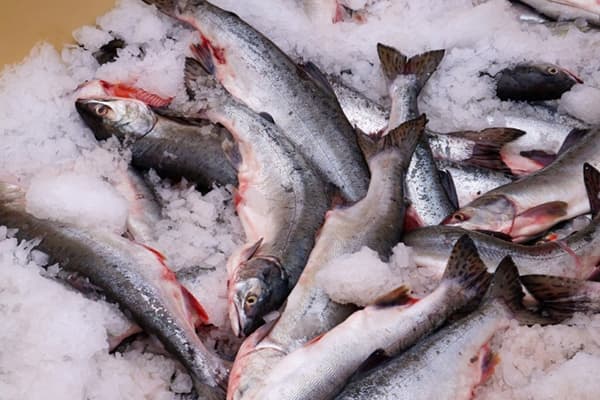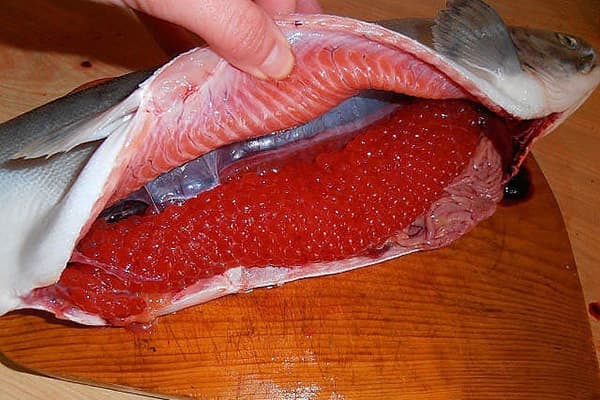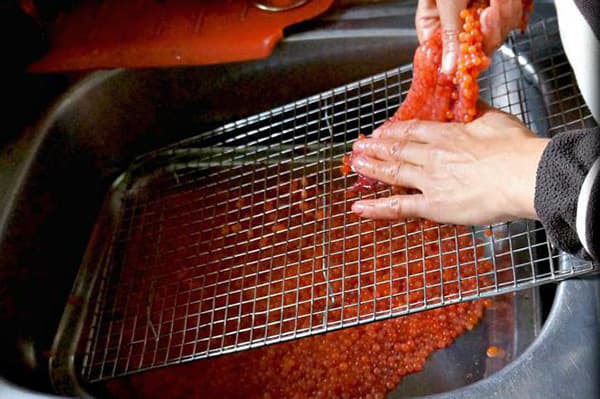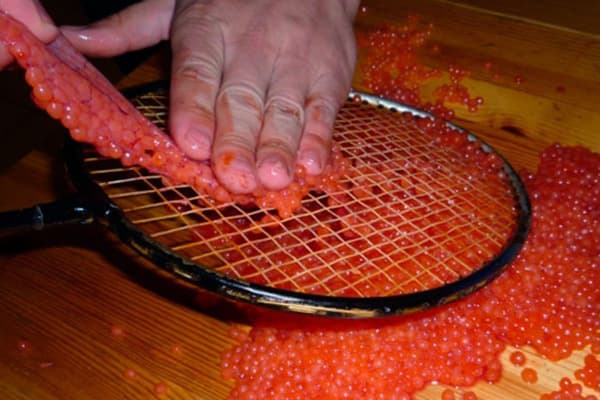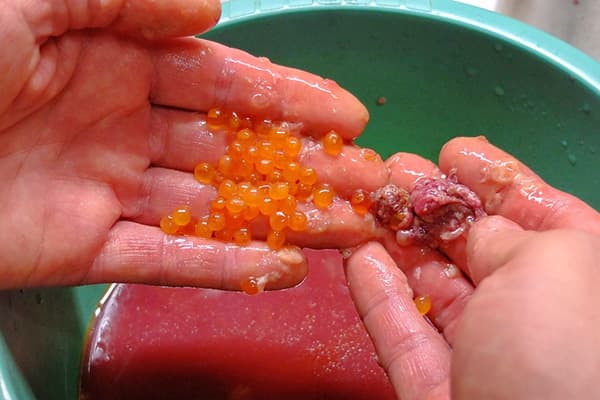Butcher pink salmon, take out caviar and prepare it for salting - now we’ll tell you how!
Content:
The modern seafood retail market has long stepped forward compared to even the past decade, and now in an ordinary supermarket to buy good pink salmon or other noble breed fish, almost just caught, is not difficult. It is especially pleasant when as a result of such “shopping fishing” you get fish with caviar. However, the inexperienced "fisherman" raises the question: how to clean the eggs from the film? How to prepare it for subsequent salting?
Choose fish in the store
First of all, you need to choose a good "sample for fishing." Here are the 5 main attributes of a suitable instance:
- Fish, of course, should have an obvious sign of the presence of caviar: a noticeably thick “belly”.
- Pay attention to the eyes - in good fish they will be transparent both in fresh and frozen form.
- Of course, the fish should not exude an unpleasant pungent smell, but at the same time it should smell, you can say, of the sea.
- If you take a fresh carcass, then when you click on its side, the dent should be quickly removed. In other words, the fish should be quite elastic.
- Another important feature of a quality product is red loose gills.
Take caviar from the carcass
So, your pink salmon successfully proceeded from the store counter to the kitchen. Where to begin?
- If you took frozen fish, then let it thaw completely, but do not overtake at room temperature. A carcass weighing a couple of kilograms will be thawed for 3-5 hours at normal temperature - after that even a slightly frozen fish can be cut.
- First, you need to rip open the belly of pink salmon, starting from the head and ending with the anus. Do not deepen the knife too much so as not to damage the caviar and the inside and not to stain everything with blood.
- Then, using the same knife, we slightly separate the caviar from the side walls, simply pushing the knife between the wall and the bag of caviar and slightly bending it to the side. This procedure must be done on both sides of the bag.
- Now you should separate the bags of caviar and entrails from the carcass of the fish. The bag and entrails are located quite tightly and are attached to the carcass in two places: next to the anus and at the head. Feel the attachment points with your fingers and separate them either with a knife or with gentle finger movements. This is pretty easy.
The bag with pink salmon caviar is actually two separate bags, between which all the other insides of the fish are located.
- Carefully separate the caviar from the insides. They are weakly connected to each other, but a slippery surface, especially with a fresh carcass, can somewhat complicate the process of separating eggs. Be careful and don't rush.
Separate caviar from the film: two ways
The first method involves the use of a special sieve with large cells:
- Separated caviar bags must be carefully torn apart with your fingers.
- Next, we arm ourselves with a tall glass, where we place the open bags with caviar.
- We insert the sushi stick into the glass and quickly move it around the calf with the film in circular motions. The film will gradually wrap around the tip of the stick. For best results, it is recommended to alternate the direction of movement of the stick.
- After we take a sieve with round holes, which in size will be slightly larger than the eggs. We spread the contents of the glass into a sieve and palm wipe the eggs through a sieve, freeing them from the remnants of the film.
- The film that is wound on a wooden stick is also sent to a sieve and with the same movements of the palm we remove the remaining eggs from it.
Do not be afraid in this way to separate the caviar from the film: the eggs of any red fish - pink salmon, trout or salmon - in their fresh form are quite elastic and will easily pass through a sieve without bursting.
If there is no special sieve, instead, some homemade caviar lovers recommend using a badminton racket.
The second method of separating caviar from the film will appeal to those who trust the heat treatment to avoid the appearance of parasites in the products.
- Separating the bags of eggs from the fish and the entrails, put them in a sieve with small holes - for example, in one through which flour is usually sifted - and boil water.
- We put the sieve on a deep bowl and in small portions we pour caviar with a film of boiling water, stirring it immediately with a fork or spoon. It is important to spray hot water in those places where you saw the appearance of a curled film. Stirring quickly and intensively is also important: the eggs will not cook, burst and remain intact, and hot water will quickly pass through a sieve into a bowl.
For 3-4 visits, you can scald almost the entire film that was on the caviar, and remove it with a fork.
Salting caviar
That's all! As you can see, there is not much trouble with caviar, and work does not require a lot of time. In this sense, red fish can be an excellent “springboard” for stuffing your hands in the home-made preparation of fish caviar, so that later you can move on to more complicated cases - for example, pike caviar.
Salting is a completely simple process. Typically, about 1–1.5 teaspoons of coarse salt is used per 200 grams of caviar.
To make sure that there is not much and not enough salt, you can try caviar with salt right during salting.
We transfer the salted product to cheesecloth, collect it in a bag and hang it over a small tray for about an hour to remove excess moisture.
Enjoy your meal!
